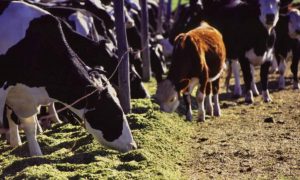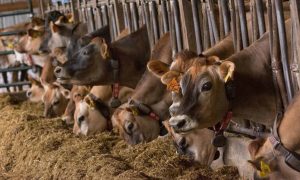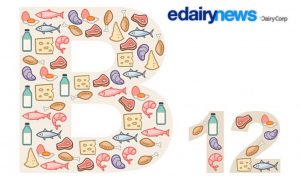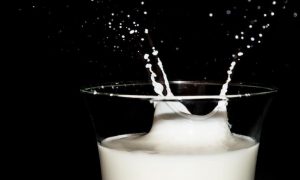
There’s a good chance you’ve seen breathless headlines this past week, some even by generally prosaic medical platforms, declaring that full-fat dairy is “good for you.” We have the PURE study to thank, yet again, for the source material, and the media penchant for click-bait, titillation, and distortion to thank for the delivery.
Before a sojourn into some basic logic and the inevitable perils of one-size-fits-all thinking, some punch lines for those of you short on time.
First, to the extent this study found an association between dairy intake – with or without its native fat content- with a reduced risk of heart disease and death (a quite limited extent, and in the context of other dietary variances), it found it principally in lower-income countries where both prevailing, and “optimal” as defined in this study, intake levels of dairy are lower, not higher, than current levels in the United States. For people reading this paper in this part of the world, the right headlines would have to be: “lower levels of dairy/dairy fat intake than prevail in the U.S. associated with lower risk of heart disease, death.” Such headlines would have made for poor clickbait, so you of course received an alternative.
Second, whenever you hear about the health effects of a given food or class of food, please remember to ask (at least yourself): “along with what? Instead of what?” In other words, whether or not more of Food X is “good” for you irrefragably has something to do with how much Food X you are eating now, and the overall pattern of your diet. The decisive harms of processed meat, or Twinkies for that matter, would disappear if these foods were offered to famine victims, for whom any sustenance would be better for health than starvation. The decisive benefits of “more lentils” would likewise disappear for someone already deriving, unadvisedly, 100% of their calories from lentils.
Context is crucial to all dietary guidance; incontrovertibly so. Please hang on to that- it will echo throughout the remainder of this rant.
And lastly, before the promised sojourn and particulars of the study, quick reflections on dairy and health. In sum, my views have not changed- because the evidence has not changed- since I offered up my “milk manifesto” in 2015. Optimal diets for human health can be achieved with or without the inclusion of dairy, and with or without the fat in that dairy if dairy is included. However, in all versions of what appear to be optimal diets for human health, when dairy is included, it tends to be at modest levels. Further, dietary patterns optimal for planetary health obligate limiting, if not eliminating, dairy. Since all humans, regardless of dietary inclinations, require a planet to inhabit, there really are no diets optimal for human health that do not redound comparably to the health of the planet. We have some hope, in other words, of eating to be healthy, vital humans on a healthy, vital planet- or we have no hope of eating to be healthy, vital humans.
That’s my preamble; now, onward as promised.
The new paper, issuing from the PURE study and published in the European Heart Journal, found an association between a measure of diet quality that included dairy, along with fruits, vegetables, nuts, legumes, and fish as “beneficial” – and lower rates of cardiovascular disease and death. The study did not isolate the effects of dairy from these other entries; found no clear difference between low-fat and full-fat dairy; and found these benefits preferentially in populations from lower-income countries where access to all of these foods is potentially impaired. Finally, both the baseline and “optimal” levels of dairy intake cited in the PURE study are, as noted, generally lower than prevailing levels in the U.S.
None of this translates into “more dairy, and/or dairy fat, is good for citizens of the U.S. or comparably high-income countries.” But those headlines sure did their job, didn’t they?
The question- is full-fat dairy “good for you” now?- should immediately prod you to wonder who is the ‘you’ in this scenario. Along with the questions above (Good along with what? Good, instead of what?), the “you” is all important, and we can use more elemental examples than dairy fat to prove it. Let’s use oxygen. Is oxygen “good for you”? Even for oxygen, it depends on who you are; it depends on your circumstances.
If “you” are in a depressurized plane at altitude, or summiting Mt Everest, the answer is almost certainly: yes. If you are going about your routine business at sea level, the answer is – you are almost certainly getting the amount you need by breathing our planet’s atmosphere (you may be getting a lot you don’t need, too, but that’s a topic for another day). If, however, you have certain not uncommon medical conditions, the answer could be a most emphatic “no,” as supplemental oxygen could very well kill you in short order.
The most vivid illustration of this is a condition called CO2 retention. You might think that our need for oxygen makes us breathe, but it does not; the trigger to breathe is a rising level of carbon dioxide. That trigger works 24/7, causing us to breathe without thinking about it, and to breathe even while asleep. We know we breathe when asleep because…we woke up this morning.
In those with certain, chronic lung diseases (generally induced by tobacco), the ability to eliminate carbon dioxide is impaired. Levels chronically above physiologic norms desensitize the CO2 meter in the central nervous system, and it fails to act as a trigger to breathe. In these people, low oxygen becomes a fallback trigger. And so, give people in this category just a bit too much oxygen, and it turns off their breathing metronome. They could die while awake in this precarious state, and will all but surely die if they fall asleep.
So, now: is oxygen good, or bad, for you? The only remotely valid answer is “it depends.” It depends on a number of considerations, in fact, but most relevant of all is which “you” we have in mind.
So, too, for dairy and dairy fat. Or for that matter cupcakes; or pickles; or…pick whatever you like. Most glaringly, for those with severely impaired access to food overall, and prone to famine-induced starvation, access to any food is apt to be “good.” For those already eating a given food or nutrient well in excess of optimal levels, more will be unhelpful and likely harmful by definition. Generating a one-size-fits-all answer for both groups is guaranteed gibberish, as would be a standard approach for oxygen delivery from the treatment of COPD to the summit of Mt Everest.
And therein lies the great and fatal flaw of the PURE study: egregious lumping of disparate groups. The researchers themselves have actually mistaken this problem of rampant lumping for a strength, claiming in every publication that PURE is especially important exactly because it pools data across high, middle, and low-income countries on 5 continents.
At face value, that does sound alluring; rather than knowing what is true for just some people, wouldn’t it be better to know universal truths? What is true, for instance, about dietary factors good for the health of everyone, everywhere?
PURE promises us such answers, with a very large sample spanning the globe. But the promise is false, as the oxygen example evinces. If there is no “one size fits all” answer for a truly elemental need, how much less so for variations on the theme of eating.
Don’t get me wrong- we can, in fact, say what general dietary patterns are best for everyone, because we are all the same kind of animal, all one extended human family. But what we can’t say – without taking into account where people are starting- is what additions or deletions will make diet better or worse for health. That answer depends, and critically, on personal context.
If you are the average American, for instance, more sodium is only likely to increase your risk of hypertension, heart attack, and stroke. If, however, you have been trekking through desert heat, you might need sodium almost as desperately as water. If you are emaciated and starving, almost any edible thing will be “good” for you as compared to the alternative. If you have constant access to willfully hyperpalatable food stuff, obesity, and type 2 diabetes, a rather different answer ensues.
In epidemiologic research, heterogeneity in the population is good only if it does not directly impact the effects of the exposures of interest (an influence known as confounding, or effect modification, depending on details we won’t get into here). A study of oxygen supplementation that purposely pooled those suffering oxygen overload and those suffering deficiency to reach a “summary judgment” about net effects for everyone would, self-evidently I trust, be ill advised.
What makes diets better than they are now differs diametrically in places prone to far too much, and those prone to far too little. Pool these together and you get nonsense.
Speaking of pools, another example to clinch that argument before moving on: imagine wanting to know the health effects of swimming. Taking your cue from PURE researchers, you do your utmost to include ‘everyone,’ and in this case that doesn’t just mean diversity of sex, age, race, etc.- but you go the extra step and include diversity of swimming capability. In other words, you include people who, and can’t, swim. You then have them do laps in a deep pool for some number of weeks to study effects on fitness.
Those who can swim complete the protocol, and the laps, and get fitter; swimming improves fitness. Those who can’t swim don’t complete the protocol, they drown; swimming is lethal. Seeking a one-size-fits-all answer, you combine all your data and conclude: no net effect of swimming on health, since it helps some and kills others.
Welcome to PURE logic.
The PURE researchers built their measure of PURE diet quality to rise with higher intake per day of vegetables, fruits, nuts, legumes, fish, and dairy, thus deciding in advance that more dairy would a “good” thing, for reasons not clear to me. They found much stronger associations between higher PURE diet scores, and better health outcomes, in lower-income countries. They also found that higher PURE diet scores meant higher intake of “sweets” along with almost every other food category. In other words, in poor countries, having access to food is better than not.
This is pretty much self-evident on its own, but it implies much more. Even obesity is a marker of lower health risk, not higher, in low-income countries- because in affluent countries, obesity tracks with indigence; but in indigent countries, obesity tracks with affluence. Obesity was associated with lower, not higher, COVID mortality in low-income countries, where it likely was associated with better access to pharmacies, physicians, and hospitals – as well as food. These same associations likely confound all findings reported for the PURE study.
But the study itself is just part of the problem here. The news media are quick to gobble up every contrarian diet finding, and proclaim it with hyperbolic fervor. As noted, this study actually found that a bit more dairy, either with or without its native fat, for people consuming very little and prone to food insecurity- might be good. That is far from shocking. But as noted, both the average intake and recommended intake of dairy in the U.S. are already both higher than the top tier of dairy intake in the PURE study. Thus, translating these findings into “eat more full fat dairy” here is not merely spin; it is willful misrepresentation. The study offered neither data nor comment in support of that contention.
In fact, the authors themselves, reflecting in their discussion section, reached an entirely sensible conclusion: “recommendations to increase, decrease, or not change intake of any given food or nutrient (e.g. dairy or fats) in the population must consider the current level of intake of various foods in a country and whether consumption of specific foods is low, high or optimal. This emphasizes the need for context specific policies and priorities for different populations globally. Changes in food policies to improve the availability and affordability of healthy natural foods are needed, particularly in countries with lower income.”
To this, I can only append “amen,” while lamenting that the pooling of data intrinsic to PURE has undermined just such nuance. Yes, indeed, whether more or less Food X is good or bad for you will have much to do with your current dietary pattern, and access to foods from A to Z. It depends.
When the editorial office of the European Heart Journal sent out the new paper to journalists for review under embargo, their headline was: “Global diet study challenges advice to limit high-fat dairy foods.” When media outlets ran the story, they followed suit. This sounds, and intentionally, like a rebuke of guidance to limit dairy intake where it is already high; it does not sound like “it depends.” But the study authors themselves acknowledged: it depends.
My remedy, in verse: If excesses from places where excesses prevail… were diverted to those who have not – we could lessen the burdens that both groups assail; predictably, and by a lot!
A final, and impassioned point. The authors compare their diet quality measure to others, and suggest that the Planetary Health score is particularly wanting, because it tracks poorly with health outcomes in low-income nations. But this is highly misleading. This score is especially focused on foods affluent nations must deemphasize – notably, beef- if we are to avoid destroying biodiversity and our planet. Extend food restrictions to subsistence diets, without providing more of something compensatory (e.g., legumes)- and of course those diets, and health, deteriorate. When access to a variety of wholesome foods is provided, the confluence of dietary factors for human and planetary health is nearly perfect. The right policy focus, therefore, is not to put human and planetary health in opposing corners, but to globalize access to the foods that serve these conjoined imperatives.
Leaving aside the legitimate subtleties of dairy and dairy fat, hyperbolic headlines are bad sustenance. Clickbait is ultraprocessed, willfully addictive, junk food for thought. When these are proffered, as they so routinely are, chew carefully, and then spit, don’t swallow. A side of yogurt is entirely optional.
























